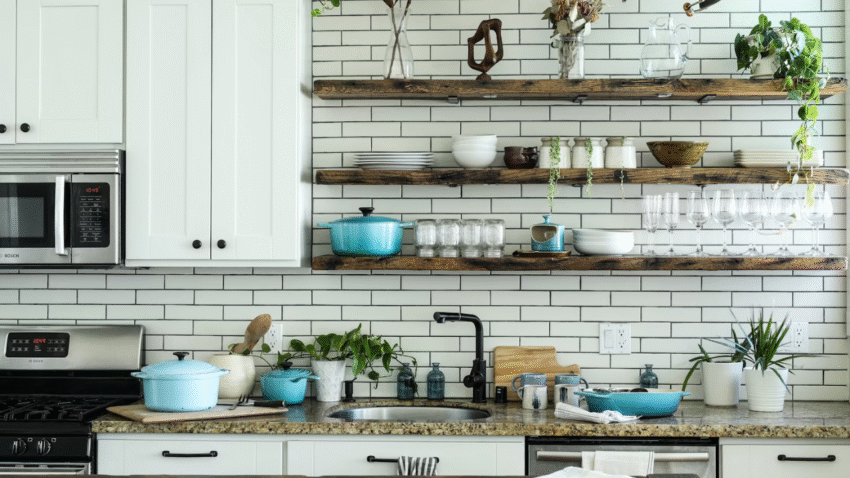Introduction
Mastering your knife skills is one of the most underrated yet powerful ways to level up your kitchen game. In this step-by-step guide, you’ll learn how to chop vegetables like a chef—fast, safe, and with precision. Struggling to get even slices or tired of uneven cooking because of mismatched cuts? Once you apply these pro techniques, you’ll boost your efficiency, improve presentation, and speed up your cooking time.
Why Chopping Vegetables Properly Matters in the Kitchen
Proper chopping isn’t just about aesthetics—it’s a foundational kitchen skill that directly impacts the outcome of your meals. Uniform cuts ensure:
- Even cooking, so nothing is undercooked or burnt
- Better texture and flavor release
- Faster prep work, saving time on busy weeknights
- Improved safety, reducing the risk of slipping or injury
- Professional-looking presentation, perfect for dinner parties or food photos
From prepping soups and stir-fries to making salads or stews, precise knife work creates a more pleasant and efficient cooking workflow.
Step-by-Step Guide to Chopping Vegetables Like a Chef
Let’s walk through the process with technique, safety, and confidence in mind.
1. Start With the Right Knife
You’ll need:
- An 8” chef’s knife (versatile and ideal for most vegetables)
- A paring knife (great for small or delicate tasks)
- A stable cutting board (wood or plastic)
- A damp cloth or paper towel under the board to prevent slipping
Tip: Keep your knife sharp! A dull blade is more dangerous than a sharp one because it requires more force and can easily slip.
2. Learn the Proper Grip
Hold the knife with your dominant hand, wrapping your fingers around the handle and placing your thumb and index finger on opposite sides of the blade’s base.
With your other hand (the “guide hand”), form a claw grip:
- Curl your fingertips inward
- Keep your knuckles slightly ahead of the fingertips
- Use your knuckles as a guide for the knife blade
This grip ensures control and keeps your fingers safe.
3. Stabilize the Vegetable
Before chopping, create a flat surface. If your vegetable is round (like a carrot or onion), slice it in half lengthwise so it doesn’t roll.
Kitchen Safety Reminder: Always cut on a flat, stable base to reduce slipping and ensure precise cuts.
4. Practice Basic Cuts
Let’s cover some of the most common chef-style cuts:
Dice (Small Cubes)
Best for onions, carrots, and bell peppers.
- Slice into even planks
- Stack the planks and cut into strips
- Turn and slice crosswise for uniform cubes
Julienne (Matchsticks)
Perfect for stir-fries or slaws.
- Slice into thin planks
- Cut planks into long, thin strips
- Aim for consistency in size for even texture
Chiffonade (Ribbon-Like)
Used for leafy greens and herbs like basil or spinach.
- Stack leaves
- Roll them tightly into a cigar shape
- Slice thinly into ribbons
Slice
Great for zucchini, cucumbers, or mushrooms.
- Hold the vegetable securely
- Use a smooth rocking motion to slice evenly
Pro Tip: Use the full length of your knife blade in a fluid motion—avoid pressing down or sawing.
5. Speed It Up Safely
Speed comes with repetition. First, focus on getting uniform shapes. Over time:
- Keep your knife tip down
- Let the blade rock back and forth as you feed vegetables under the knife
- Keep your guide hand in the claw position at all times
Never compromise safety for speed—rushing leads to accidents and uneven cuts.
Common Mistakes to Avoid
Even seasoned home cooks can fall into bad chopping habits. Here’s what to watch for:
Mistake 1: Using the Wrong Knife
Solution: Stick with a sharp chef’s knife for most tasks. Avoid serrated knives unless cutting soft produce like tomatoes.
Mistake 2: Not Creating a Flat Surface
Solution: Always cut vegetables in half first to stabilize them. It makes chopping faster and safer.
Mistake 3: Poor Grip or Finger Position
Solution: Use the claw grip technique to protect your fingers and control the cut.
Mistake 4: Pushing Instead of Rocking
Solution: Glide the blade forward and down in a rocking motion. It’s smoother, safer, and easier on your wrist.
Mistake 5: Neglecting Knife Maintenance
Solution: Hone your knife regularly and sharpen it as needed. A sharp knife = cleaner cuts + fewer accidents.
Extra Tips & Kitchen Hacks
Make your chopping routine even better with these smart add-ons:
1. Use a Bench Scraper
Transfer chopped veggies quickly and safely from your cutting board to your pan or bowl without dulling your knife by scraping with the blade.
2. Practice With Soft Vegetables First
Start with zucchini, mushrooms, or cucumbers before moving on to harder vegetables like carrots or squash. This builds skill and confidence.
3. Prep in Batches
Chop onions, carrots, and bell peppers in advance and store them in airtight containers for easy meal prep throughout the week.
Related task to check next: [How to Organize Your Kitchen for Faster Meal Prep]
Conclusion
Chopping vegetables like a chef is a game-changer for your kitchen routine. With the right grip, the right knife, and a few practiced techniques, you’ll chop faster, safer, and with restaurant-quality results.
To recap:
- Use a sharp chef’s knife
- Master the claw grip and rocking motion
- Learn cuts like dice, julienne, and chiffonade
- Focus on safety and consistency first—speed will come later
✅ Bookmark this guide and take your first steps toward pro-level kitchen confidence—one slice at a time!
